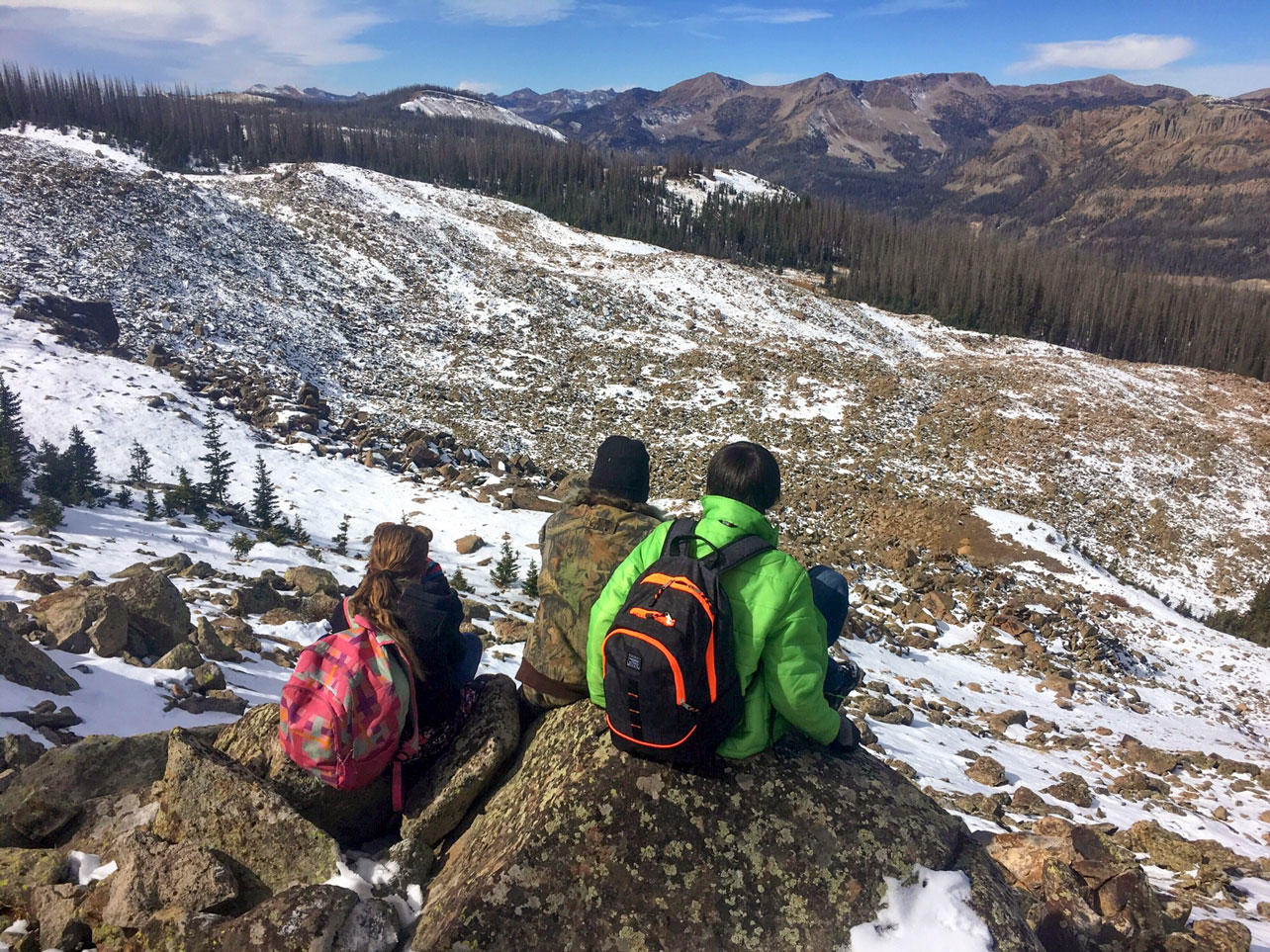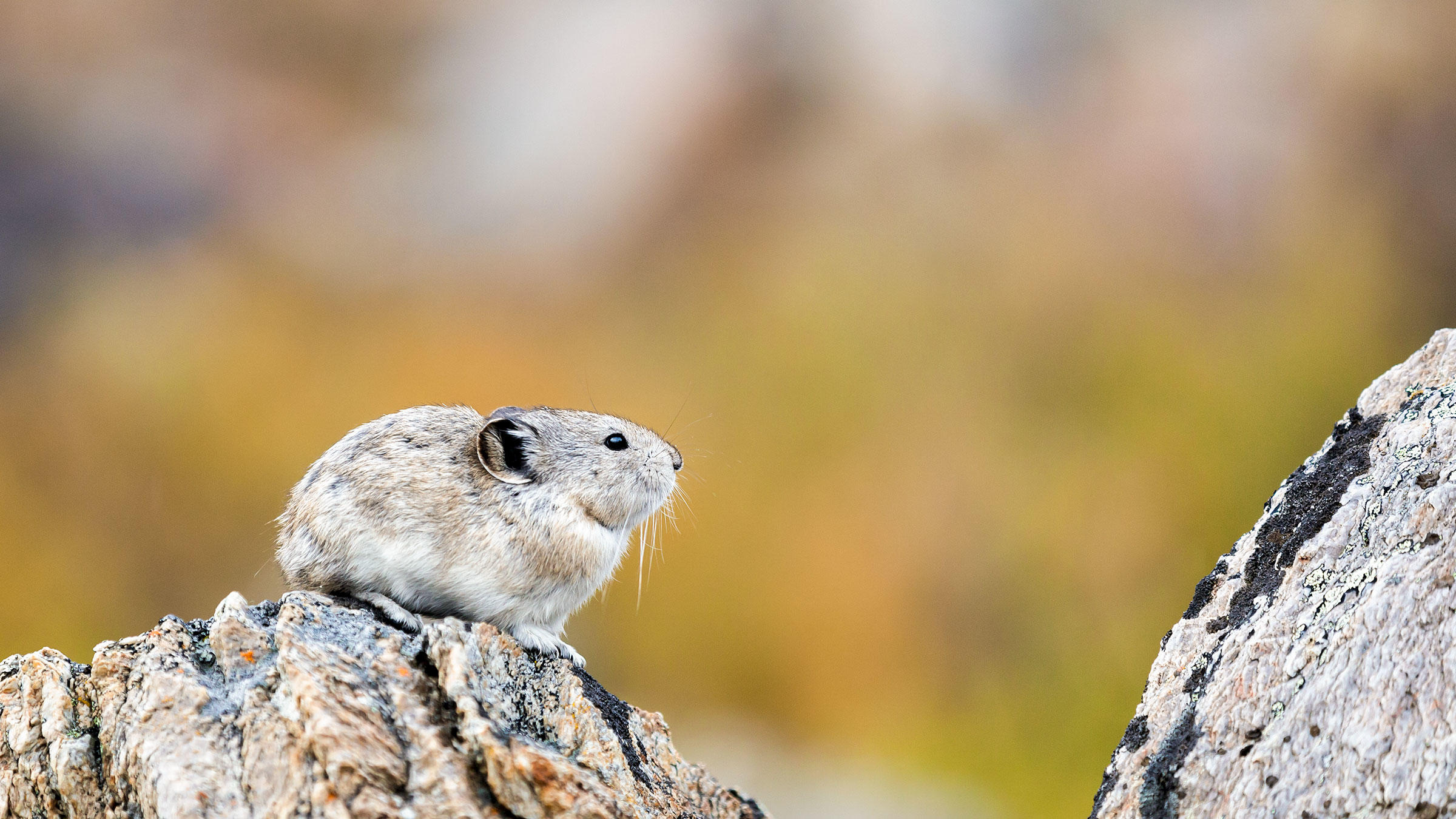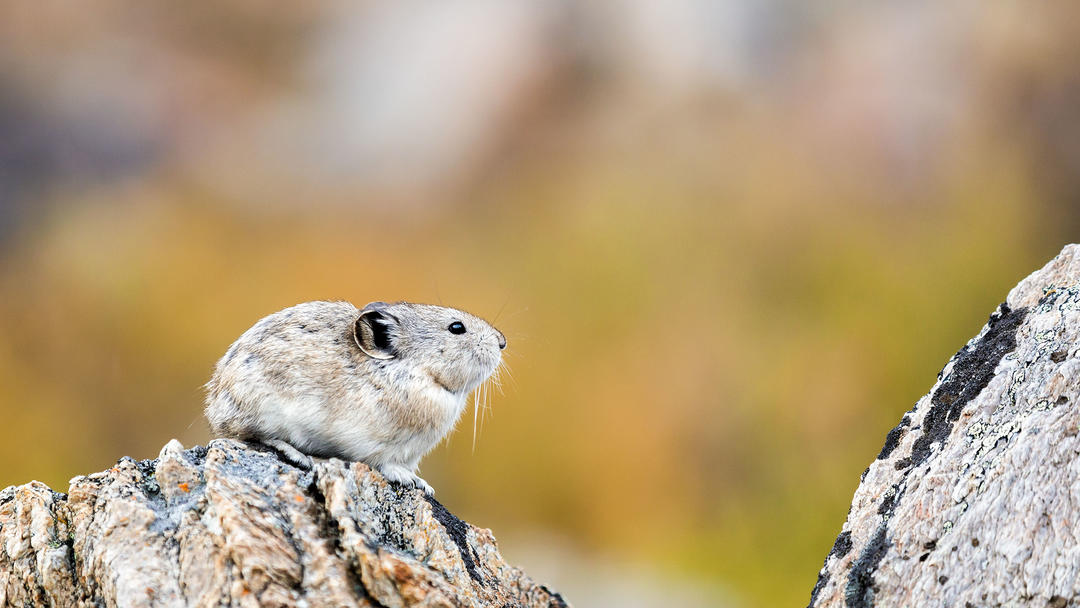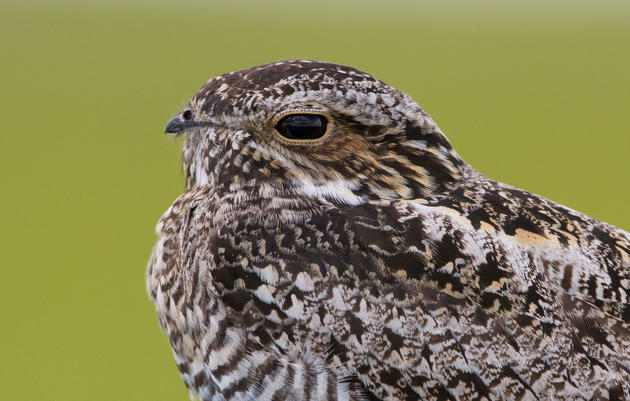One sunny morning last October, 13 six-graders from Pagosa Peak Open School and their teacher joined me on a one-mile uphill climb through early winter snow in the San Juan National Forest. Our goal was to initiate a long-term monitoring plot for the American Pika (Ochotona princeps). A relative of hares and rabbits that lives in the Rocky Mountain high country, pikas feed on the young stems of grasses and flowers. They do not hibernate, and thus spend the majority of the warmer months gathering food to cache in "haypiles" for winter. One of the more adorable sights of the animal kingdom is when a pika carries a “bouquet” of flowers in its mouth to store in its den for winter use.
Pikas are so adapted to cold climates that they can die from brief exposures to temperatures as low as 79° Fahrenheit. Consequently, they rely on the cooling shade of large rocks found among alpine talus fields to regulate the temperature of their dens. Because of their extreme sensitivity to warming, pikas are an indicator species for climate change. The idea here is that if pikas are in trouble, other alpine species like Black Rosy-Finches will be to.
To better understand this issue, there’s an ongoing community science project called PikaNet. Mountain Studies Institute, a non-profit mountain research engine located in Silverton and Durango, Colorado, works as a regional contributor. PikaNet community scientists "adopt" a site, confirm the presence of pikas, and collect various data, including weather measurements, terrain characterization, and photos of surroundings. The information they collect helps determine how pika populations change over time.
Climate change is an incredibly important issue, but it often feels too overwhelming to do anything about. PikaNet is a great opportunity to teach Pagosa Springs youth about climate change, while giving them a fun and educational way to take action.
Hence, our pika hike. After a 30-minute period of focused searching for pikas by sight and sound, the students set about noting GPS coordinates and weather, taking measurements of boulders onsite, looking for sign of new and old haypiles, and identifying other animal species nearby. These students will upload their data online and continue to manage the pika plot for future years.
To get involved in PikaNet, visit http://www.mountainstudies.org/pikanet. For readers on the Front Range, check out the Front Range Pika Project.











